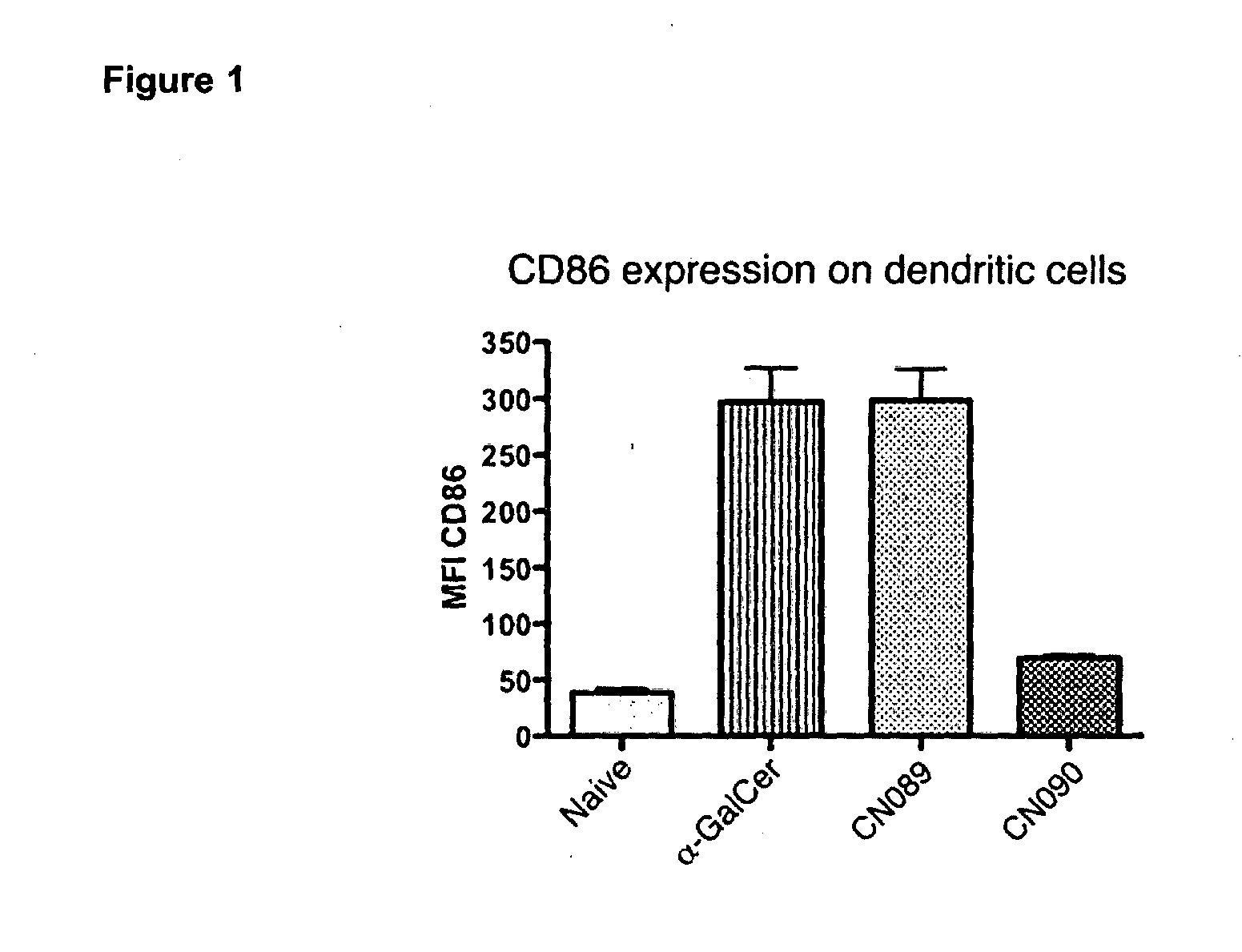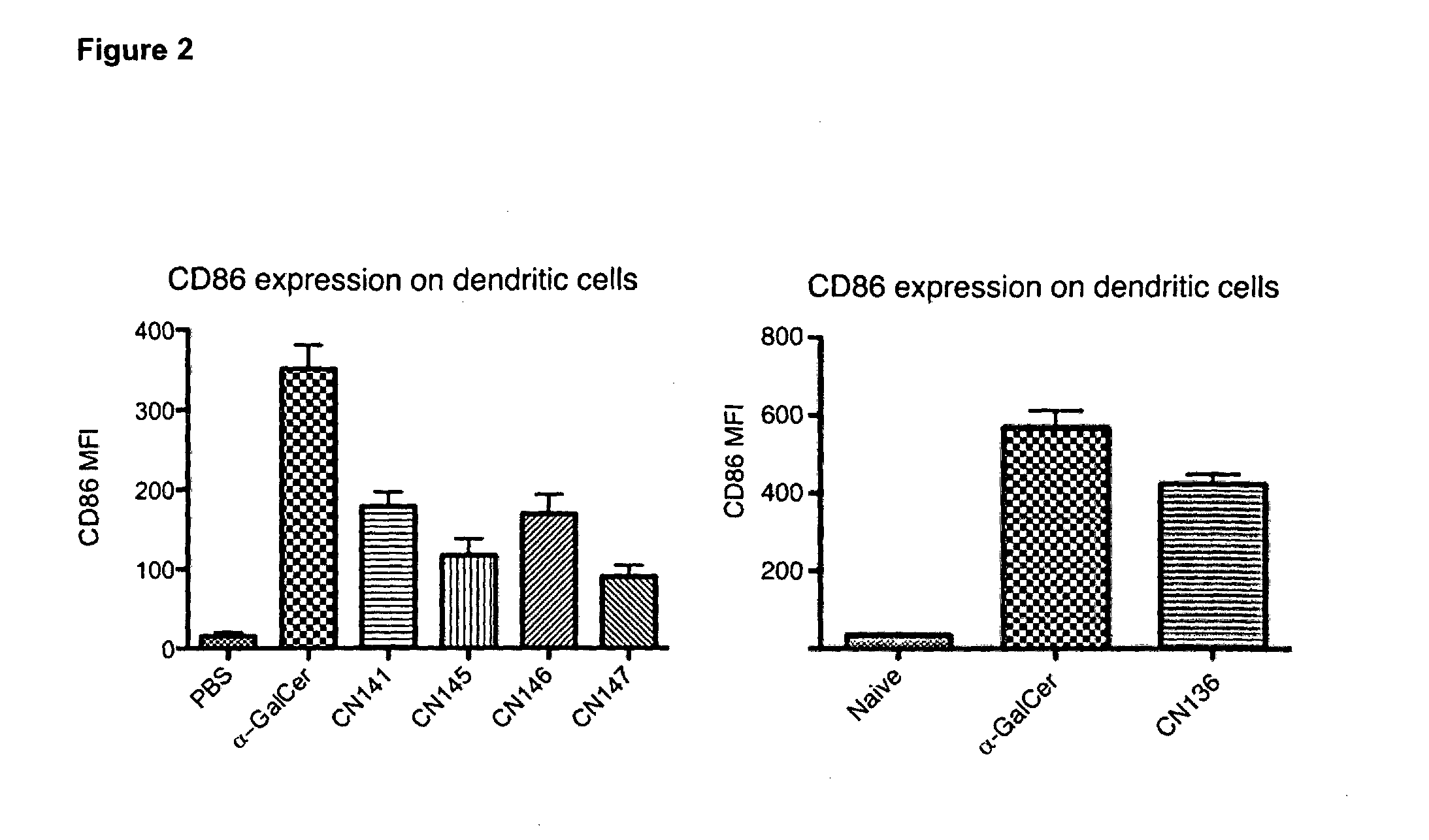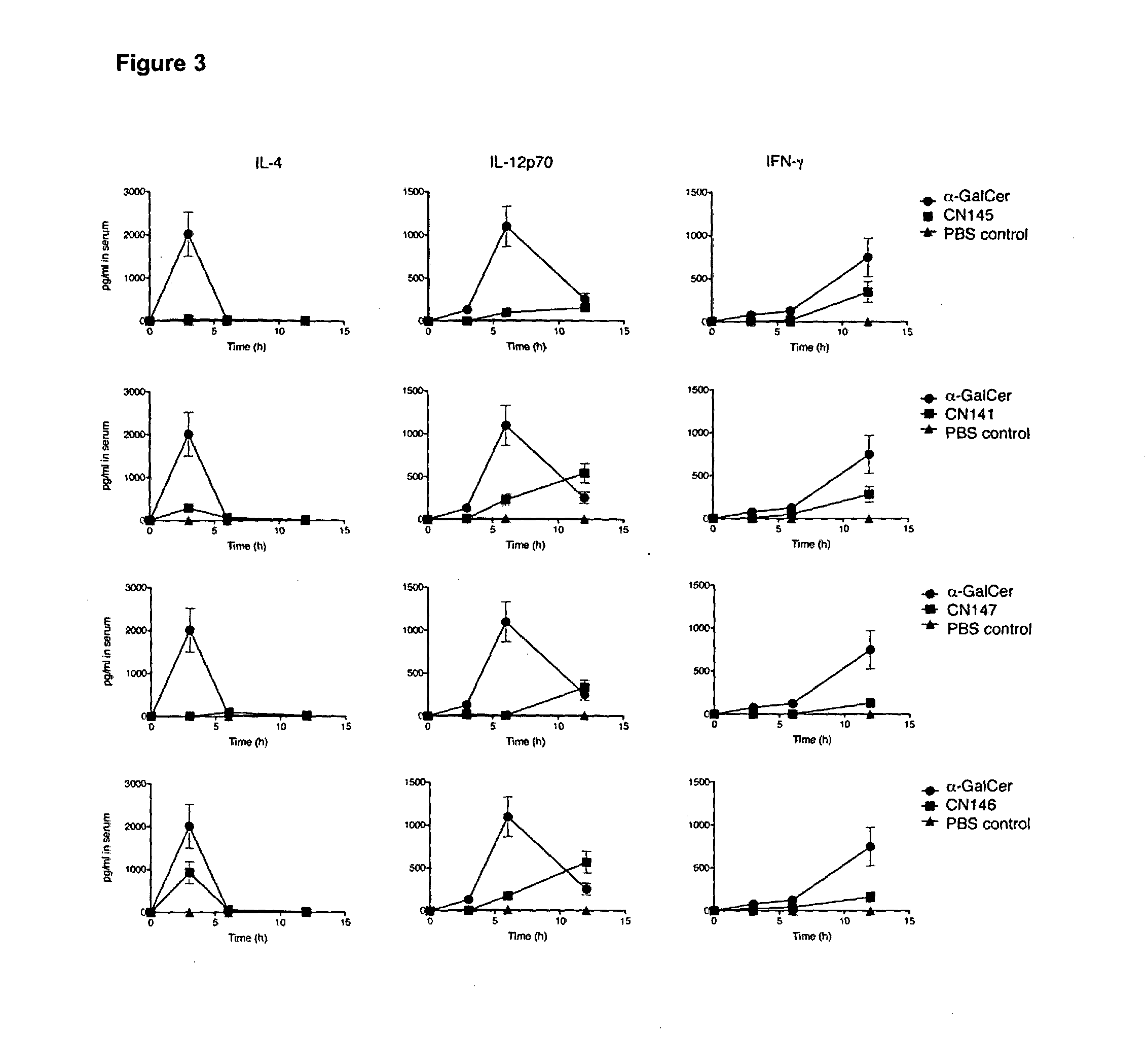Organic compounds
a technology of sphingoglycolipids and analogues, which is applied in the field of organic compounds, can solve the problems of poor solubility, unsatisfactory immune responses, and limitations, and achieve the effects of reducing the production of cytokines, and negative impact on the quality of t cell responses
- Summary
- Abstract
- Description
- Claims
- Application Information
AI Technical Summary
Benefits of technology
Problems solved by technology
Method used
Image
Examples
example 1
Synthesis of (2S,3S,4R)-2-Amino-1-O-α-D-galactopyranosyl-4-O-hexacosanoyl octadecane-1,3,4-triol (CN089)
example 1.1
Synthesis of (2S,3S,4R)-2-Azido-3,4-O-dibenzyl-1-O-α-D-galactopyranosyl octadec-6-ene-1,3,4-triol (18)
[0152]
[0153]To an ice-cooled solution of per(trimethylsilyl)galactose (Bhat and Gervay-Hague 2001) (1.44 g, 2.66 mmol) in dry CH2Cl2 (13 mL) is added TMSI (0.34 mL, 2.5 mmol) dropwise. The mixture is stirred at 0° C. for 40 min, then at rt for 10 min, before being transferred to a flask containing Bu4NI (2.9 mg, 7.9 mmol), i-Pr2NEt (0.90 mL, 5.2 mmol), 4 Å molecular sieves (200 mg) and acceptor 17 (442 mg, 0.847 mmol) in CH2Cl2 (12 mL). The reaction is stirred under Ar at rt for 24 h before quenching with methanol (0.3 mL, 3 h) to destroy any remaining galactosyl iodide. After diluting with petroleum ether (100 mL) and filtration through celite, the filtrate is washed with 10% aq NaS2O3, brine, dried (MgSO4), and concentrated to afford a yellow oil (1.7 g). The silyl groups are removed by stirring at rt with DOWEX 50 WX8-200 resin (200 mg) in 5:1 MeOH—CH2Cl2 (36 mL) for 60 min, befo...
example 1.2
Synthesis of (2S,3S,4R)-3,4-O-Dibenzyl-1-O-α-D-galactopyranosyl-2-hexacosanoylamino octadec-6-ene-1,3,4-triol (1)
[0154]
[0155]A solution of azide 18 (267 mg, 0.39 mmol) in 10:1 THF-water (11 mL) is stirred with PMe3 (1 M solution in THF, 1.95 mL, 1.95 mmol) at 0° C. for 45 min then at rt for 2 h, before adding 1 M NaOH solution (3.9 mL). After stirring the biphasic mixture at rt for 2 h, the reaction is quenched with EtOAc (4 mL) and left at rt overnight. The reaction mixture is partitioned between water and CH2Cl2 and the product is thoroughly extracted into the organic phase, dried (MgSO4), and concentrated under reduced pressure to give the crude amine product (310 mg). In a separate flask, isobutyl chloroformate (68 μl, 0.52 mmol) is added to a mixture of hexacosanoic acid (205 mg, 0.517 mmol) and NEt3 (0.10 mL, 0.72 mmol) in dry CH2Cl2 (5 mL), and stirred for 35 min at rt before cooling in ice and transferring to an ice-cooled solution of the above amine in CH2Cl2 (4 mL). The re...
PUM
| Property | Measurement | Unit |
|---|---|---|
| solubility | aaaaa | aaaaa |
| solubility | aaaaa | aaaaa |
| temperature | aaaaa | aaaaa |
Abstract
Description
Claims
Application Information
 Login to View More
Login to View More - R&D
- Intellectual Property
- Life Sciences
- Materials
- Tech Scout
- Unparalleled Data Quality
- Higher Quality Content
- 60% Fewer Hallucinations
Browse by: Latest US Patents, China's latest patents, Technical Efficacy Thesaurus, Application Domain, Technology Topic, Popular Technical Reports.
© 2025 PatSnap. All rights reserved.Legal|Privacy policy|Modern Slavery Act Transparency Statement|Sitemap|About US| Contact US: help@patsnap.com



